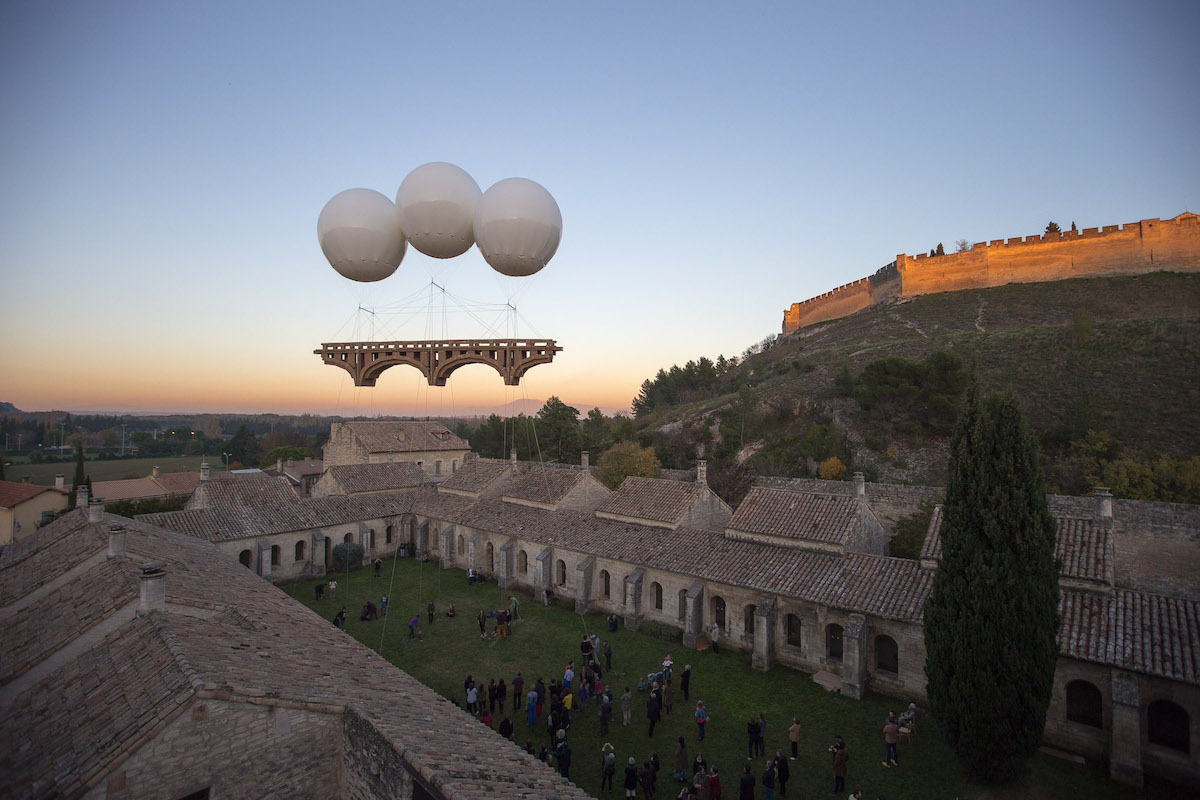
Photo: Alex Nollet
For over 20 years, French artist Olivier Grossetête has been creating what he calls Participative Monumental Constructions. Made with the assistance of local communities, these ephemeral pieces of architecture are erected using only cardboard boxes and tape. Grossetête works without the assistance of machinery, using only the help of local participants to bring these fantasy pieces to life. While this architecture can take many forms, we’re particularly partial to the floating cardboard bridges that are a recurring theme.
From Japan to France to Italy, these bridges take their cues from local architecture. Often lifted by balloons, the final installations are as much a lesson in physics as they are in architecture. The pieces, which are designed and constructed over the course of a week with the help of 15 to 30 workshop participants, are intended to live for just a few days. After which time, they’re carefully broken down into their previous forms.
“Ephemeral by nature, like us, these monumental participatory cardboard constructions are destined to disappear. Their stake is, therefore, as much in the process, in the journey, and in the collective experience they propose, as in their final forms. This ‘suspended’ bridge, inaccessible in essence, ultimately connects us to ourselves: an image of our relationship with the unspeakable,” shares the artist.
Grossetête turned to cardboard not only because it’s inexpensive and easy to find, but also because as a material, it’s not intimidating. By using a material that is accessible to everyone, he’s able to easily draw in volunteers to accomplish the collective goal in a short amount of time. And by working together, they’re effortlessly able to construct impressive pieces of architecture that can weigh more than one and a half tons.
French artist Olivier Grossetête uses cardboard boxes and tape to create floating bridges.
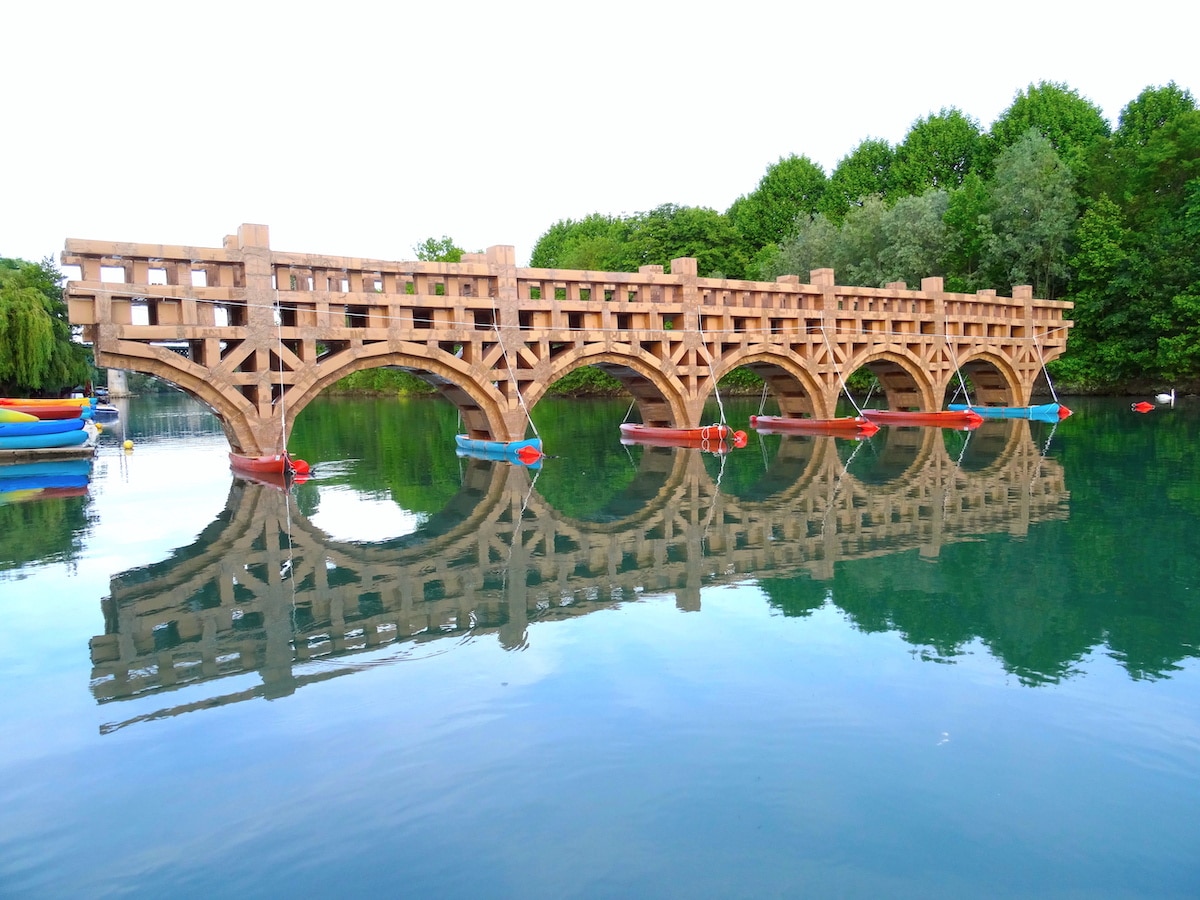
Photo: Mucha
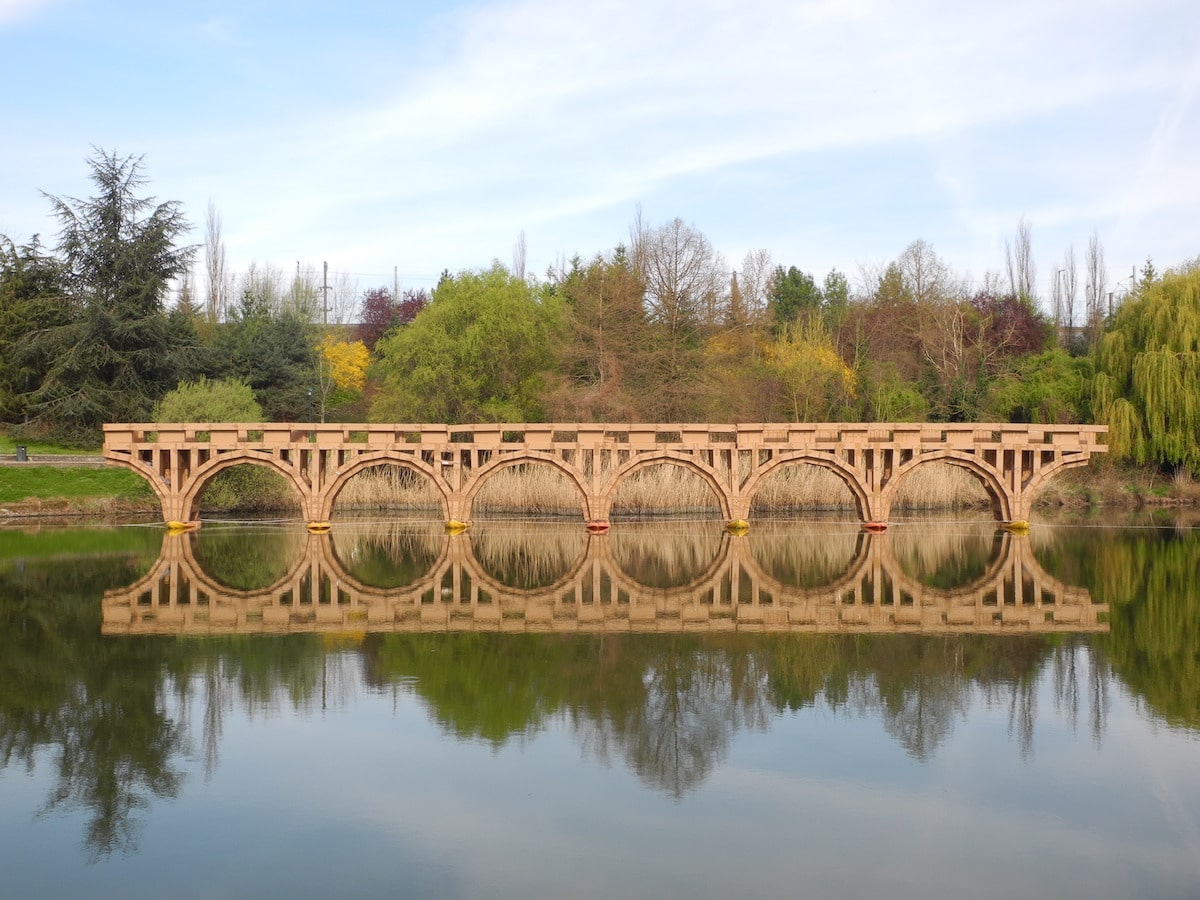
Photo: Olivier Grossetête
Built during community workshops with the help of local volunteers, they’re often suspended by balloons.
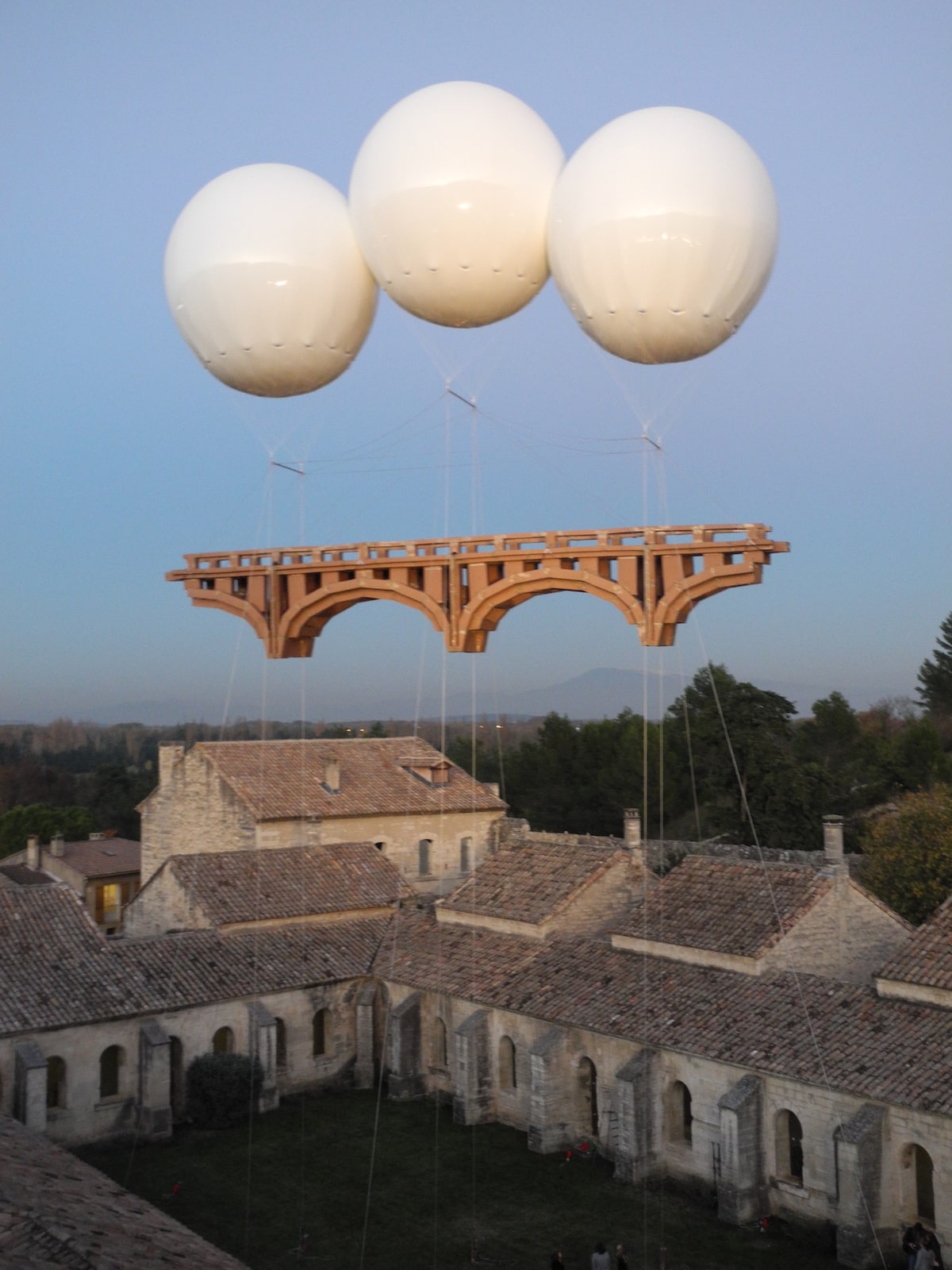
Photo: Olivier Grossetête

These ephemeral structures are disassembled just a few days after they take flight.
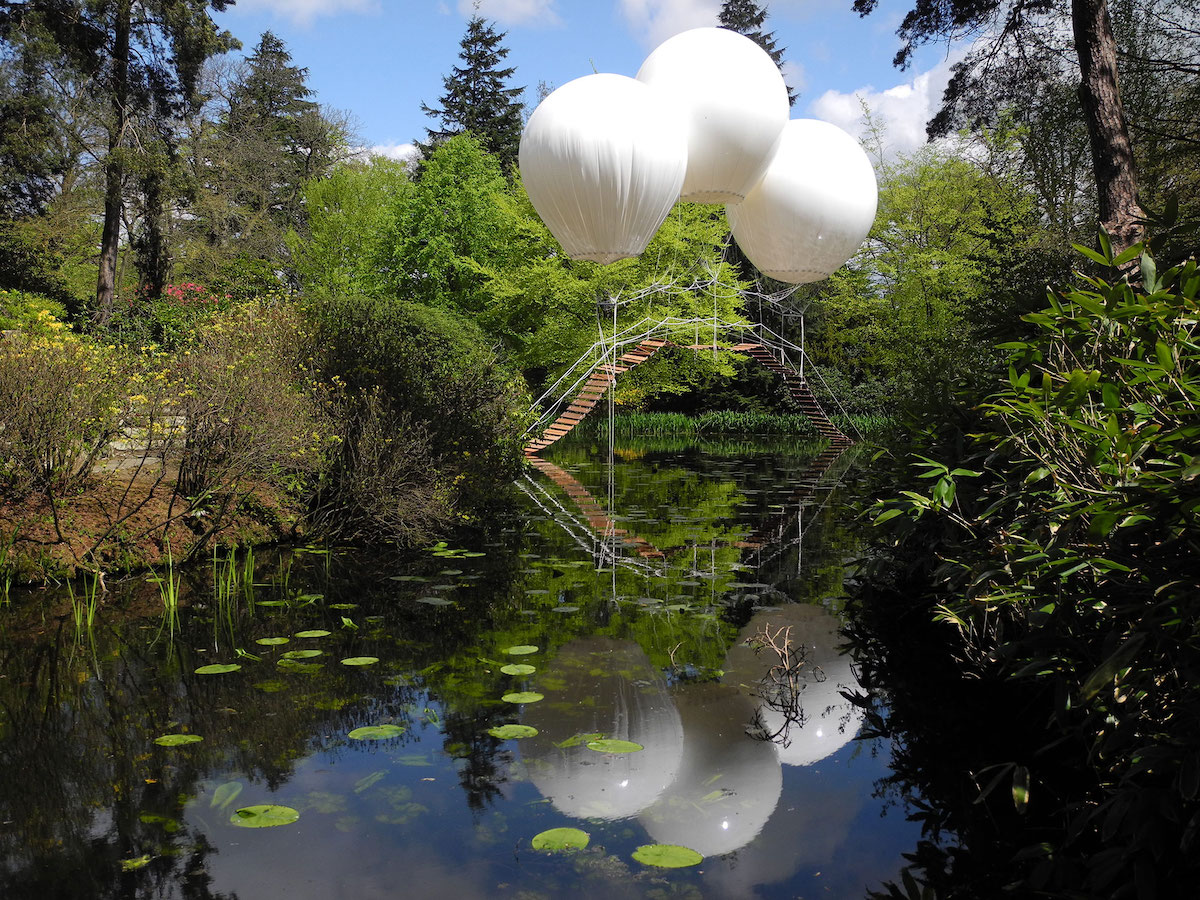

Photo: Mantuano/French Embassy in Rome
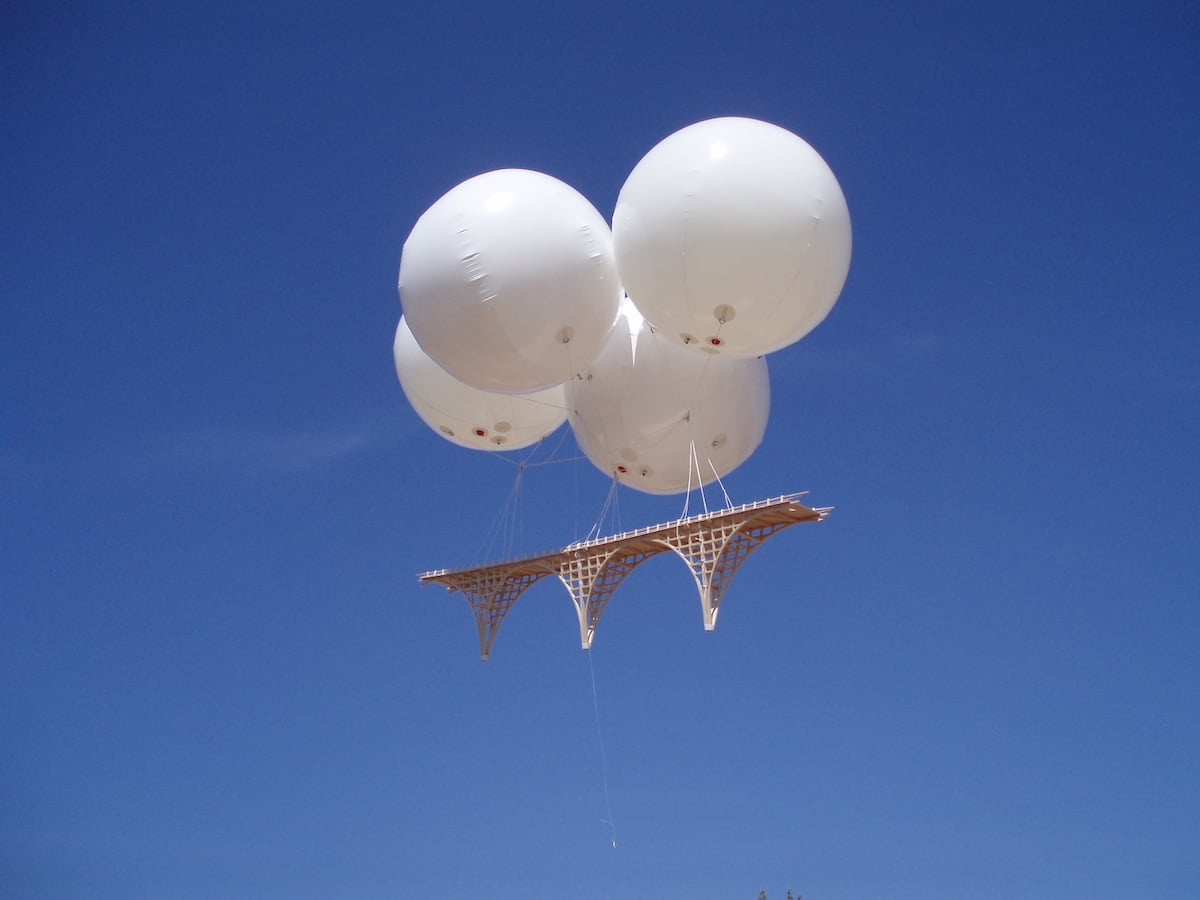
Photo: Olivier Grossetête
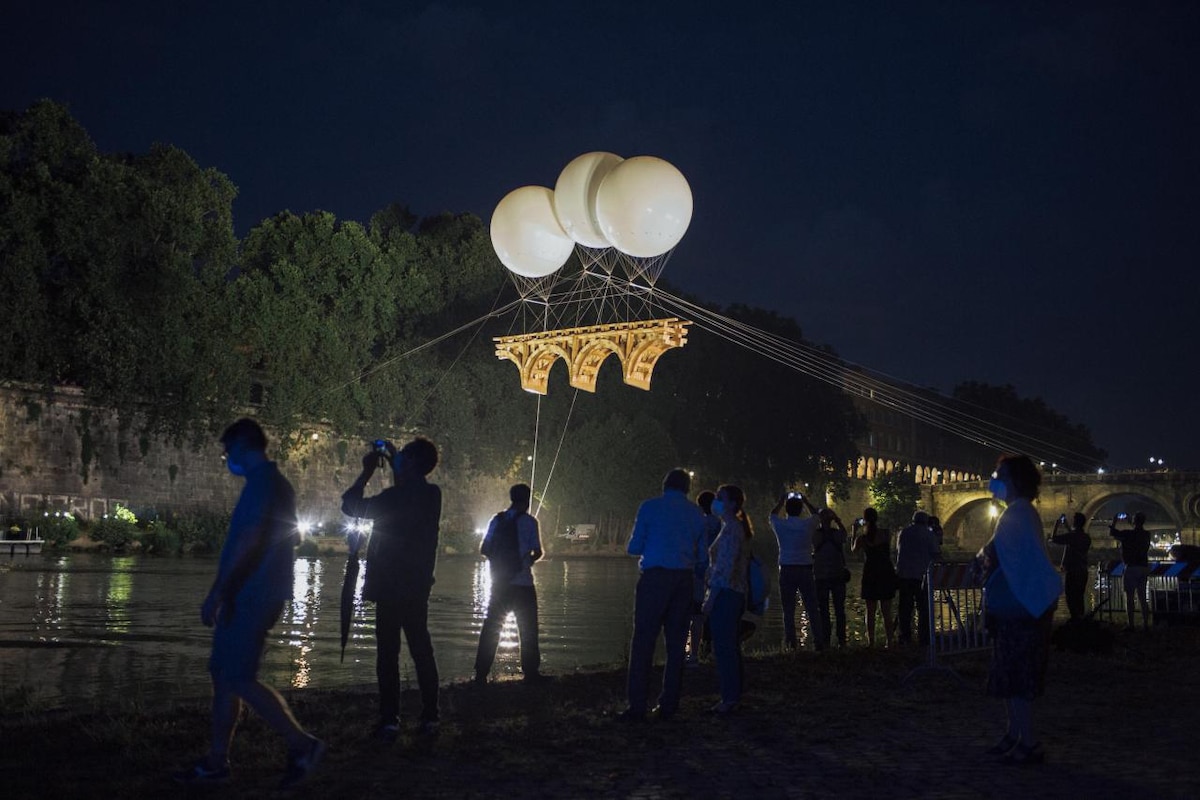
Photo: Mantuano/French Embassy in Rome
